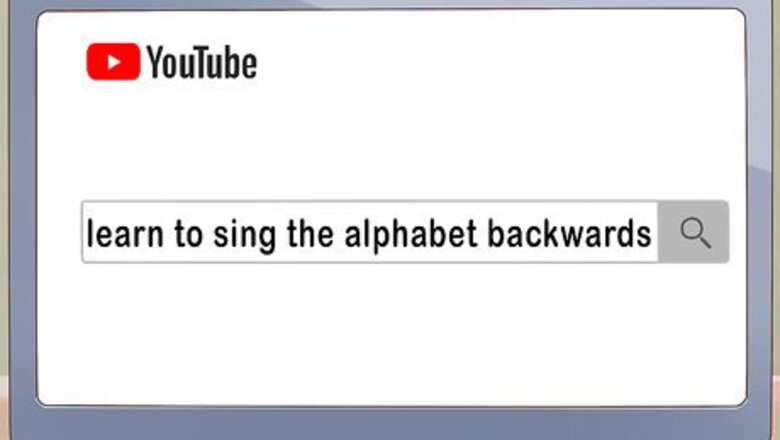
views
Using a Video

Find a video online that sings the alphabet backwards. Type “learn to sing the alphabet backwards” into an online search bar to find useful videos that sing the alphabet backwards slowly so that you can easily practice. Look on sites like YouTube for videos, making sure the video shows you a visual of the letters so that you can sing along. These videos will sing to the tune of the regular alphabet song.

Practice singing along with the video several times. This is the best way to learn the alphabet backwards, as the tune and visuals help your mind remember the backwards alphabet faster. Many videos start off singing the alphabet backwards slowly before gaining speed and going faster, which will give you lots of opportunities for practice. Rewatch the video as many times as needed before you feel confident that you can sing it without help.

Sing the alphabet backwards without the help of the video. This will help test you to see how much of it you truly know. Don't worry if you can't recite it perfectly the first time you try without the music or visuals. Keep practicing, going slowly to give your brain more time to remember which letter comes next. If you get stuck and need help, rewatch the section of the video that you're struggling with.
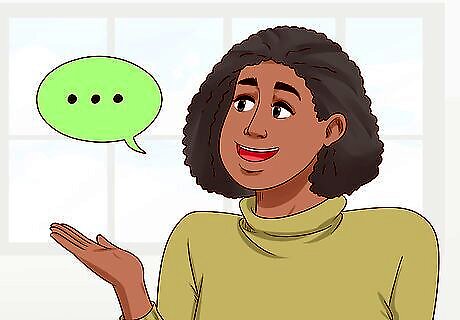
Recite the alphabet backwards without singing it. Once you can sing the alphabet backwards, try removing the tune and just saying each letter. Your brain will sing the song in your head, making it easier for you to remember which letter to say next. Write the alphabet on a piece of paper to help you if you get stuck, only looking at the paper if it's necessary. There are several helpful videos online that recite the alphabet backwards without singing it too.
Combining Letters
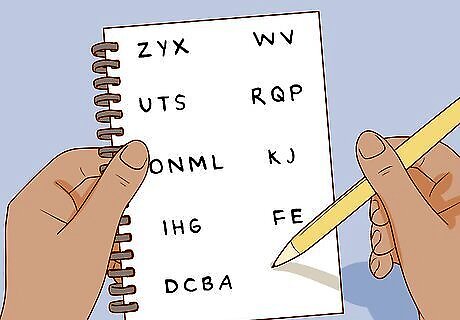
Combine letters into chunks of 2 to 4. Chunking helps you remember groups of letters, similar to how you memorize phone numbers in chunks of 3-4 numbers. Starting from the end of the alphabet, group the letters together into more manageable memorization chunks. For example, the chunks might be "ZYX," "WV," "UTS," "RQP," "ONML," "KJ," "IHG" "FE," "DCBA".

Practice associating each group of letters with one another. Once you've chosen the chunks, start mentally grouping them together. For example, as soon as you say 'Z', you should start thinking of Y. After you're able to remember the letters of each individual chunk, you can start practicing associating each chunk with the following group. For example, once you've learned the chunks "GFED" and "CBA," start practicing thinking of 'C' right after you say 'D'.

Repeat each chunk of letters 5-10 times. Repeating the chunks in the correct order over and over again is one of the best ways you can teach your brain to remember them. Start from the end of the alphabet and repeat the chunks of letters, going slowly at first, until you're confident you know each group of letters. It may help you to write out the chunks as you're saying them, as a visual aid will help you remember them even better.
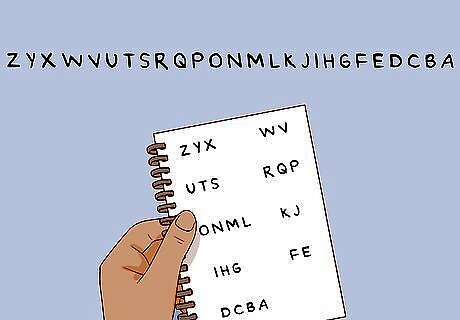
String each chunk together until you've said the alphabet backwards. Once you've mastered each chunk of letters, begin going through the entire alphabet backwards, saying each chunk back to back. By stringing the chunks of letters together, you'll have learned how to say the alphabet backwards. Add a melody to the string of letters if it helps you remember them in order. You may have to practice linking all the chunks together several times before it comes to you naturally.
Forming a Story with Letters

Assign a word for each letter. Many children learn the alphabet by linking words and images to the letters, and you can do the same thing to help you learn it backwards. Try to choose words you can imagine as vividly as possible. For example, let “m” stand for mouse and “l” stand for log. "S" can stand for sun and "t" can stand for turtle.
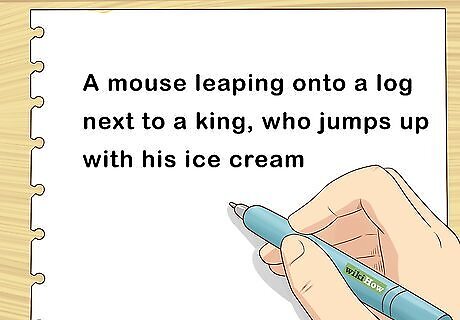
Make a story or poem out of the words. Working from Z to A, combine your words. Make the words flow into one another when you can. For instance, you can think of a mouse leaping onto a log next to a king, who jumps up with his ice cream. The keywords in your story, such as mouse and log, will tell you that the letter order is m, l, k, j, i. While some people can learn the alphabet backwards by simply recalling a list of words, creating a vivid story is a more powerful mnemonic device. It may help you to write out the story and the image assigned to each letter so that you don't forget.
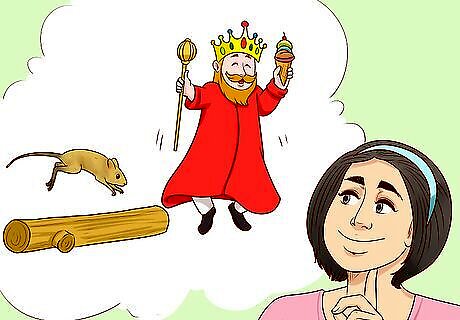
Visualize your story. As you go through the story, try to imagine it in as much detail as possible. The more vivid the images, the more easily you'll recall what comes next. Refine the words you use as you go to make your story more memorable to yourself.

Recite the story until it comes naturally to you. Once you have a concrete story imagined, start at Z and go all the way to A. Recall and visualize each word, taking out the letters starting the keywords when you reach them. With practice, you'll be able to recite the alphabet backwards.













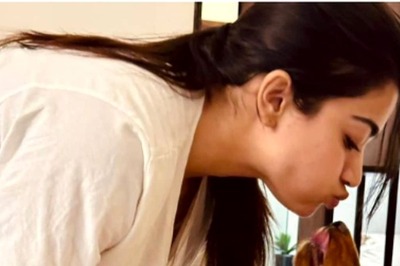






Comments
0 comment